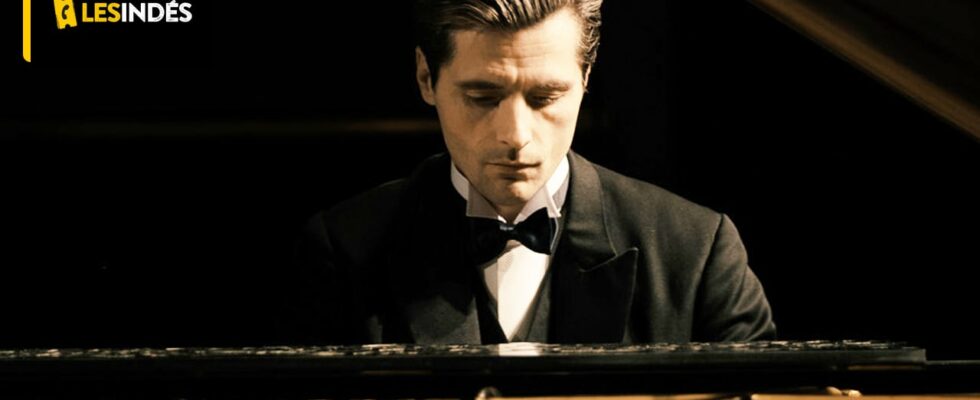On the occasion of the release of “Boléro”, here are five things to know about this biopic led by Raphaël Personnaz in the shoes of the composer Maurice Ravel.
What is it about ? In 1928, while Paris was living in the rhythm of the Roaring Twenties, the dancer Ida Rubinstein commissioned Maurice Ravel to compose the music for her next ballet. Paralyzed and lacking inspiration, the composer flips through the pages of his life – the failures of his beginnings, the fracture of the Great War, the impossible love he feels for his muse Misia Sert… Ravel will then dive into the deepest deep within himself to create his universal work, the Bolero.
Expected
Swann Arlaud, recently crowned Best Supporting Actor at the César for his lawyer character in the award-winning Anatomy of a Fall, was originally considered to slip into the shoes of Maurice Ravel. Virginie Efira and Vicky Krieps were also approached to take part in the biopic directed by Anne Fontaine (who is also familiar with the genre since she was responsible for Coco avant Chanel, a 2009 film about the great fashion designer).
Birth of the project
Anne Fontaine first started from a memory: when she was a young dancer, she was marked by the “Bolero” in the choreography of Maurice Béjart, danced by Jorge Donn, which she found both modern and erotic. The director specifies: “Then there is a desire: the desire, for a long time, to make a film about music and dance – my father being a composer and organist, I have been immersed in a musical atmosphere all my life. Finally there is “enigma represented by the creator of this stainless work, which travels through eras and countries, inspires pop groups as well as repetitive music. How did Ravel conceive it?”
“I knew little about his personality. I decided to meet him through the cyclical and captivating construction of “Bolero”.”
Pascal Chantier Doria Tillier and Raphaël Personnaz
The Belvedere
Anne Fontaine filmed in Ravel’s real house, Le Belvédère, in Montfort-l’Amaury in Yvelines: “It’s a real miracle that we obtained the right to plant our camera there. Ravel had designed it entirely to work there. Everything there is in his image – the bookcases, the friezes, the narrowness of the corridors, the Japanese garden; everything there is small – like him, and like a reminder of the pain he felt about it. I had visited it, of course, and was thinking of reconstructing a setting until I told myself that it would be extraordinary to film there, and in the cemetery of Montfort-l’Amaury.”
“It was long negotiations, and the town hall ended up trusting me. By setting a single condition: we could not have more than seven people in the place. The prestige of Alexandre Tharaud, who plays the music for the film , immense pianist and great Ravelian, surely helped with this agreement”recalls the director.
At the cinema in 2024: after Bob and One Love, 10 major biopics await you!
Less 10 kg for Raphaël Personnaz
Ravel was very thin and very dry. Thus, Raphaël Personnaz lost 10 kilos, for the sake of resemblance, but also to get into the skin of the character: “Alexandre Tharaud told me that, when he played Ravel, he had the feeling of falling into his hands. I really liked the image. I tried to apply that to my body. Ravel still stands very straight. There are twenty-three short silent films of him: as soon as he feels that attention is on him, that he spots the camera or that someone approaches him, he stiffens.”
“Even when he is at the piano, he stands very straight. How could he live forever like that? Mystery. He only relaxed while composing his music. So I worked on this form of dryness and at the same time this goodness that everyone attributes to Ravel.”
Improve your piano skills
If Raphaël Personnaz has a solid foundation in piano, he had to improve for the needs of the film, alongside the famous pianist Alexandre Tharaud. The actor remembers: “When Anne introduced me to Alexandre, I saw what it was like to play Ravel. Alexandre put me in the hands of a teacher – Fréderic Vaysse-Knitter with whom I learned to play.” La Pavane” and several other pieces. Which means that 80% of the film is my hands playing.”
“It was important for the film that I was able to ensure this 80%. Alexandre Tharaud takes over for the remaining 20% – it would have taken me at least ten years of practice to reach his level and a miracle to reach his genius.”
Furthermore, Raphaël Personnaz also had to learn to conduct an orchestra. A necessity for the scenes where Ravel conducts La Valse and Le Bolero. Jean-Michel Ferran, his teacher, first had him rehearsed in a small room at the Conservatory in the 12th arrondissement: “The moment finally came when I found myself in front of ninety instrumentalists, all experienced. “You will see, the physical sensation of an orchestra playing in front of you is incomparable,” Jean-Michel Ferran warned me. He hadn’t lied.”
“Coming out of the first rehearsals, when I had just directed wonderful musicians who had warmly made me believe that I was a wonderful conductor, my legs were shaking, I had never felt a shock of such power. I loved shooting these scenes, I could have continued to play them forever”finishes the actor.
